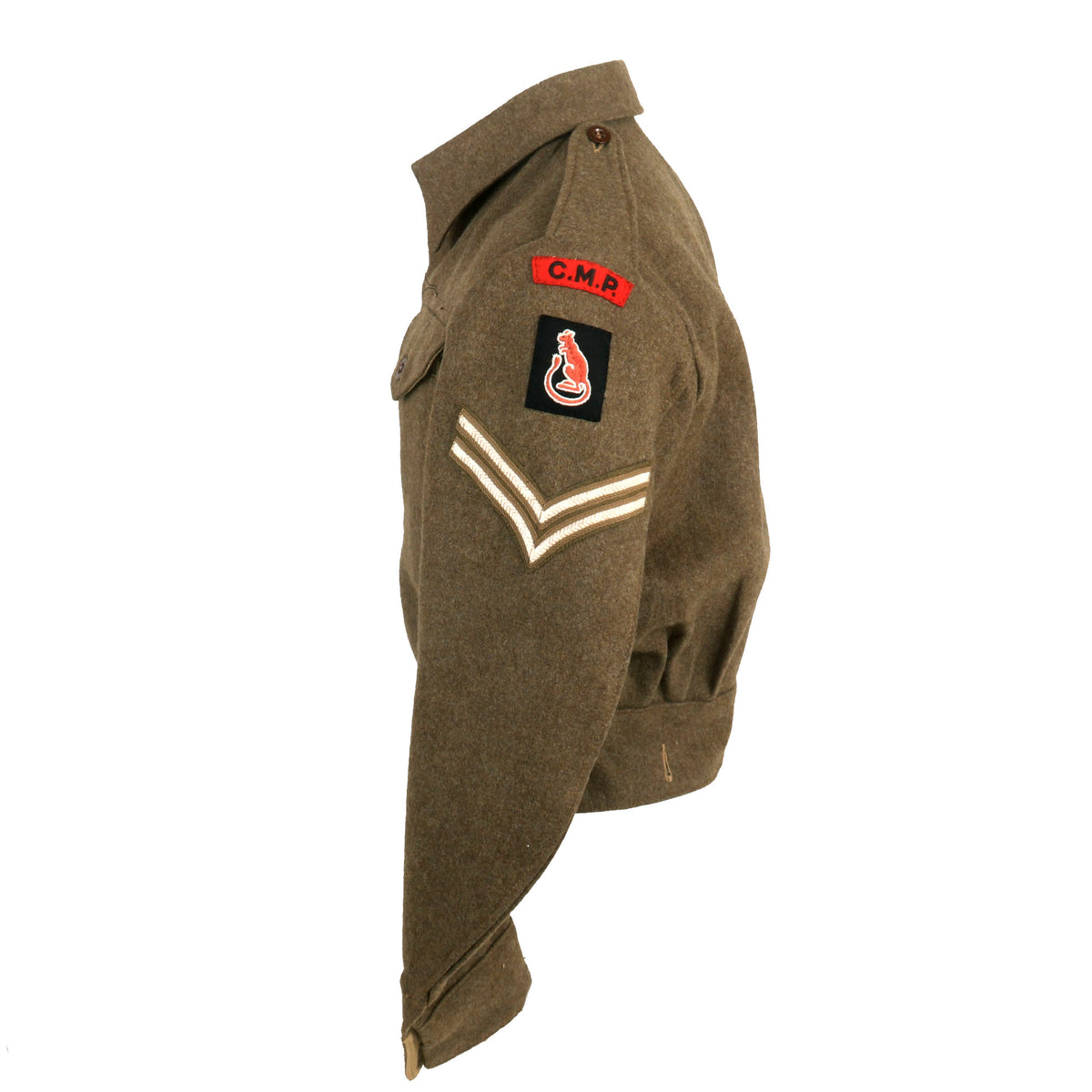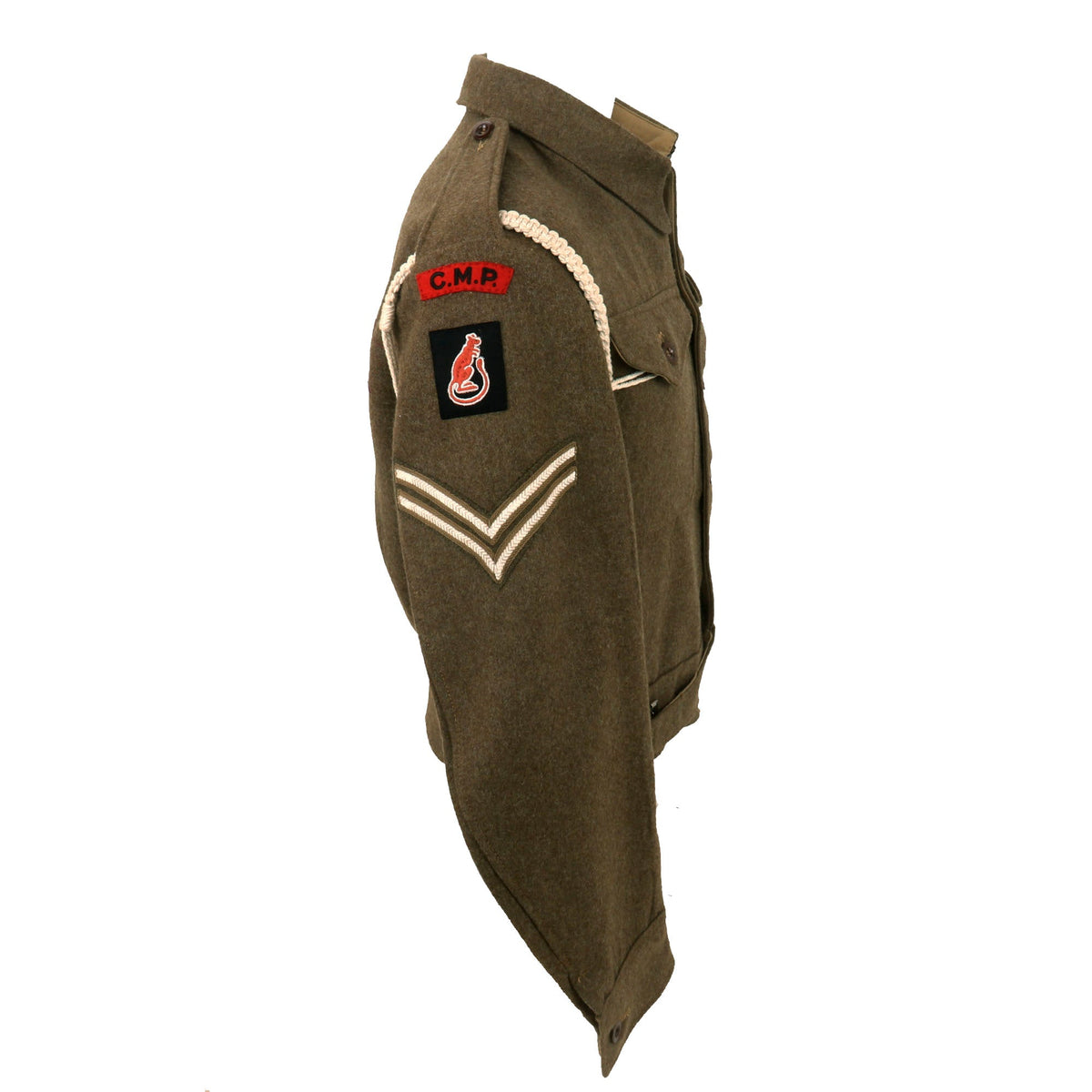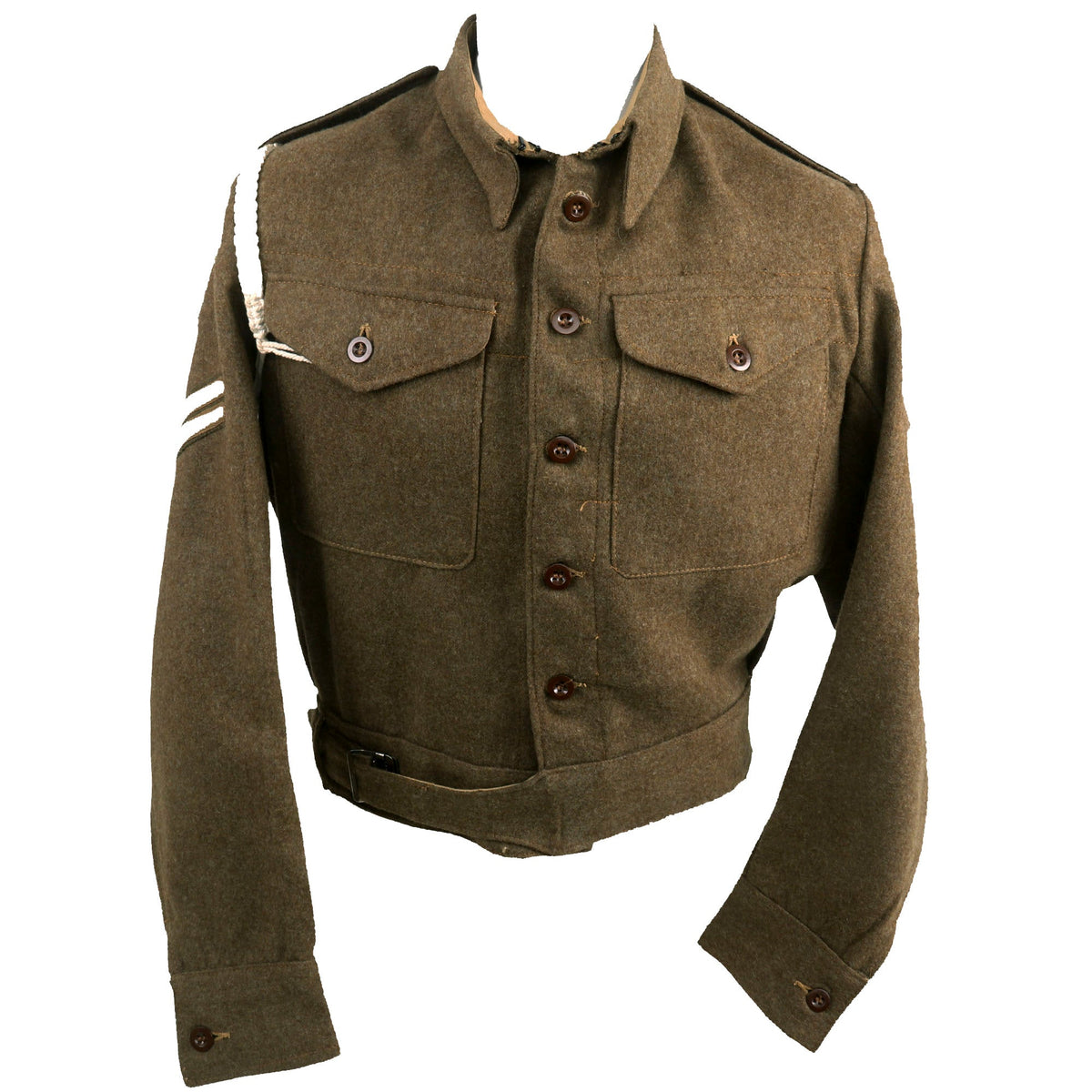Original British WWII 7th Armored Division “Desert Rats” Corps of Military Police P-40 Battledress Uniform Tunic With Period Applied Insignia – Dated 1945 Original Items
$ 375,00 $ 112,50
Original Item: Only One Available. This is a very nice condition WWII British P-40 “Battledress” uniform top, with original applied insignia for the 7th Armored Division, Corps of Military Police. The patches on the left and right sleeves are the “CMP” rocker in red with the black and red jerboa. The 7th Armored Division had a red jerboa (a nocturnal rodent indigenous to North Africa) as its emblem and became known as “The Desert Rats”.
The jacket is original to WWII and is in fantastic, almost unissued condition. The maker label to the inside shows the maker and size information:
BATTLEDRESS
BLOUSE 1940 PATTERN.
SIZE : NO. 16
HEIGHT 6FT. 1INS. TO 6FT. 2INS.
BREAST 39INS. TO 40INS.
WAIST 34 INS. TO 35INS.
COREN & CO
1945
This is a very nice example of a WWII used British Battledress and displays wonderfully.
Comes more than ready for further research and display.
The 7th Armored Brigade was an armored brigade formation of the British Army. The brigade is also known as the “Desert Rats”, a nickname formerly held by the 7th Armored Division, of which the brigade formed a part during the Second World War until late 1941.
History
The brigade was raised from garrison troops stationed in North Africa in 1938. It was initially known as the Light Armoured Brigade which was part of the Mobile Division in Egypt.
When the Mobile Division became 7th Armored Division, the Light Armored Brigade became the 7th Armored Brigade in February 1940. The 7th Armored Division had a red jerboa (a nocturnal rodent indigenous to North Africa) as its emblem and became known as “The Desert Rats”. The 7th Armored Brigade, meanwhile, had a green jerboa as its emblem. The 7th Brigade became known as the “Green Rats” or the “Jungle Rats” after it moved to Burma in 1942.
Second World War
The Second World War broke out in September 1939, with both Britain and France declaring war on Germany after the German Army invaded Poland. Italy launched an invasion of Egypt, then a British Protectorate, shortly after entering the war on Germany’s side in June 1940. The brigade fought in many of the major battles in North Africa, including Operation Crusader in November, fighting at Sidi Rezegh to try to relieve the Commonwealth forces in the port of Tobruk, besieged by Axis forces.
Two Sherman tanks of the 6th Royal Tank Regiment in action against German machine gun positions on the walls of San Marino, during the Battle of San Marino, September 1944.
It moved to fight in the Burma campaign in early 1942 just as the Imperial Japanese Army were pushing the Allies back. The brigade took part in the fighting retreat to India, successfully completed in May just before the monsoons would have cut them off. The 7th Armoured Brigade returned to the Middle East in 1943, based in Iraq and later Egypt. With Axis forces defeated in North Africa, the brigade’s time was a quiet one until it moved to the Italian Front in April 1944 where it remained for the duration of the Second World War; fighting as part of I Canadian Corps, itself part of the British Eighth Army. The brigade, now composed of the 2nd, 6th and 8th Royal Tank Regiments, fought in the final stages of the Battle of Monte Cassino and later the Gothic Line and in Operation Grapeshot, the final offensive in Italy.
Fast Shipping with Professional Packaging
Thanks to our longstanding association with UPS FedEx DHL, and other major international carriers, we are able to provide a range of shipping options. Our warehouse staff is expertly trained and will wrap your products according to our exact and precise specifications. Prior to shipping, your goods will be thoroughly examined and securely secured. We ship to thousands clients each day across multiple countries. This shows how we're dedicated to be the largest retailer on the internet. Warehouses and distribution centres can be located throughout Europe as well as the USA.
Note: Orders with more than one item will be assigned a processing date depending on the item.
Before shipping before shipping, we'll conduct a thorough inspection of the items you have ordered. Today, the majority of orders will be delivered within 48 hours. The delivery time will be between 3-7 days.
Returns
The stock is dynamic and we cannot completely manage it because multiple stakeholders are involved, including our factory and warehouse. So the actual stock may alter at any time. It's possible that you may not receive your order once the order has been made.
Our policy is valid for a period of 30 days. If you don't receive the product within 30 days, we are not able to issue a refund or an exchange.
You can only return an item if it is unused and in the same state as the day you received it. You must have the item in its original packaging.
Related products
Uncategorized
Australian WWII Owen MK1 Machine Carbine SMG Custom Fabricated Replica with Sling Original Items
Uncategorized
Uncategorized
Uncategorized
Uncategorized
Uncategorized
Uncategorized
Uncategorized
Uncategorized
Uncategorized
Uncategorized
Uncategorized
Band of Brothers ORIGINAL GERMAN WWII Le. F.H. 18 10.5cm ARTILLERY PIECE Original Items
Uncategorized
Uncategorized
Armoured Fighting Vehicles of the World: AFVs of World War One (Hardcover Book) New Made Items
Uncategorized
Uncategorized
Uncategorized
Armored Burgonet Helmet & Polearm from Scottish Castle Leith Hall Circa 1700 Original Items












































































